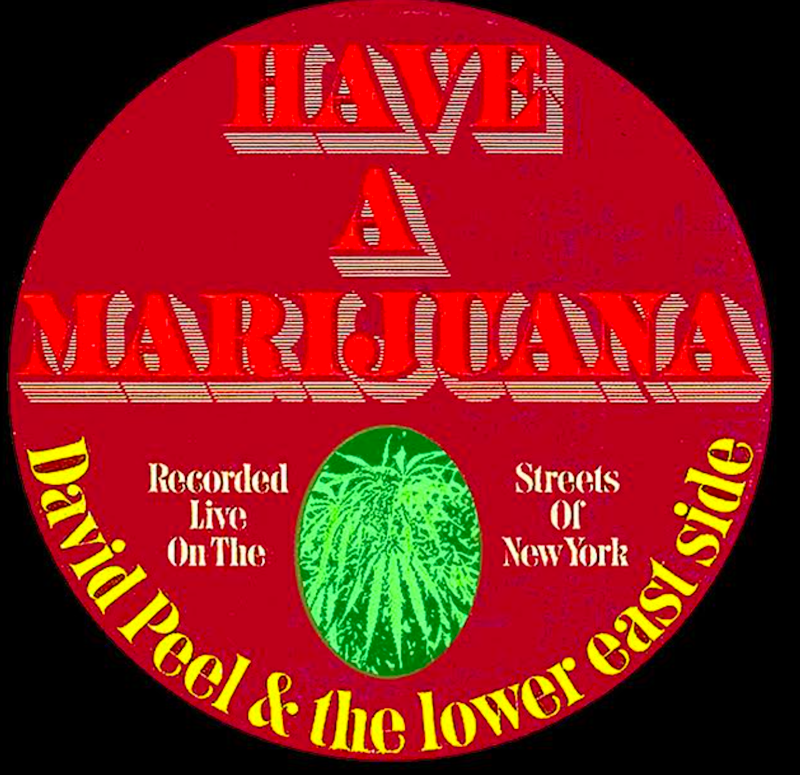Amazing how things have changed since David Peel and the Lower East Side recorded “Have a Marijuana” in 1968, when there were lots of hippies and grass all around. It was enjoyable getting high in New York City. The street musician and folk rebel Peel founded the “pot” party during the Vietnam War. Back then, an overall feeling of happiness coincided during a historical period characterized by anxiety and rage. Keep in mind, this was old school without borders—when your counterculture grandparents cleaned ounces of flower, seed and stem on album covers and lit roaches with matches. Let’s open a window, let in fresh oxygen and the clear air on marijuana’s latest chapter.
The fragrance of marijuana ebbs and flows in tandem with the tidewaters of the East River. Hemp’s heady odor moves into the top ranks, as a decomposing cesspool of hundreds of other stinks and stenches permeate the metropolis on any given day. As second-hand pot smoke rises so does the public outcry. Many view it as a new quality of life issue. How could boisterous New York progressives not have anticipated such a messy, mismanaged legal marijuana roll-out in a city full of smarts, smarty cats, and smartasses. The complaints were fast and furious. Fists shook in the air. Comments are along the lines of “We’re not happy with the new ‘high’ reality of cannabis use our streets, businesses, parks and everywhere else.”
Some statistics were recently printed on a politically motivated “reefer shock” style advertisement that appeared in The New York Times. The questionable full-page ad ran upfront in the news section with no contact info, email address or even a QR code. Part of it read: “Why didn’t New York follow the way other states handled their legalizations? Illinois raised over $216 million in tax revenue its first year of adult use sales, New York’s barely on pace to reach $48 million.” The ad was paid for by an organization called The Coalition for Access to Regulated & Safe Cannabis. Seems like we’re in a strange transitional phase, where culture starts to mirror science fiction movie plots when it comes to drug legalization.
There’s nothing to worry about; with plenty of product for adult purchase, and a variety of sci-fi titles to stream online afterwards, you’ll be fine. It’s no surprise that New York City leads the world in cannabis use. That’s according to CFAH (Center for Advancing Health), their study is chock full of cannabis facts and figures provided by wellness “experts” to support their findings. But the public is frustrated. With so much positive mainstream hype, it’s simple to overlook the plant’s checkered past. Cannabis use can have a direct harmful influence on one’s health, especially if used during pregnancy. Throw a yellow flag down on the field whenever I hear ambitious talk about any substance and continue the dialogue afterwards. Naturally, the best part—just getting stoned—was the delight for the majority.
New York State legalized marijuana in 2021 with certain restrictions applying to indoor and public outdoor use. If you’re caught up in smoke, that’s a $50 fine. Violations shot up 89 percent in 2022. The legalization law passed was touted as innovative. Not really, what happened was anticlimactic: a glitched application process floundered in a broken system that stressed out a community’s patience.
With big business cannabis corporations now in the game to win, there’s an uneven playfield. There’s always going to be disagreement when it comes to anything involving drugs and New York lawmakers. This time, they weren’t fast enough. Crafty businesspeople in an organized effort, some rumored to have foreign interests, quickly seized a sizable portion of the New York City’s available post-pandemic storefront spaces and were prepared to open immediately. An estimated 1200 unlicensed marijuana storefronts appeared practically overnight on every block. The City Council just passed a resolution to shut down the illegal stores.
The New York Office of Cannabis Management’s program which approves legal licenses continues to operate today, as it continues to lag behind schedule. What have they done so far? Not much, only 17 licensed dispensaries operate in the entire state. Sorry, no tickets available for the “gold rush” entrepreneurs waiting for a ride on the legal weed train. Left out were thousands of potential applicants; minority and women business owners, veterans, and medical operators, all seeking cultivation and dispensary licenses. Poor David Peel is rolling over in his grave, as a bunch of greedy hands try to steal his pot stash.
If you visit a legal dispensary in Greenwich Village, you’re required to show ID at the door. Cash and debit card only. The business operates in an orderly and seamless fashion—almost like an Apple store—except it’s for recreational drugs. Faster than Macy’s perfume counter, the knowledgeable, youthful crew are eager to fulfill your needs and provide prompt guidance and suggestions. There’re even items like Weed Water, a flavored soda; it sucks. It’s important know your own personal drug boundary, which is crucial before partaking in today’s products because it’s strong medicine.
Who’s buying? Everybody. But what’s gone is the cast of characters who once appeared at your door with drugs—the local drug delivery service people whose stories made the sublime HBO series High Maintenance so enjoyable. At an unlicensed City weed bodega, a polite sophomore behind the counter is working their way through college. If you ask them how’s business going, they’re all smiles and reply “Awesome.” The store smells like herb.

